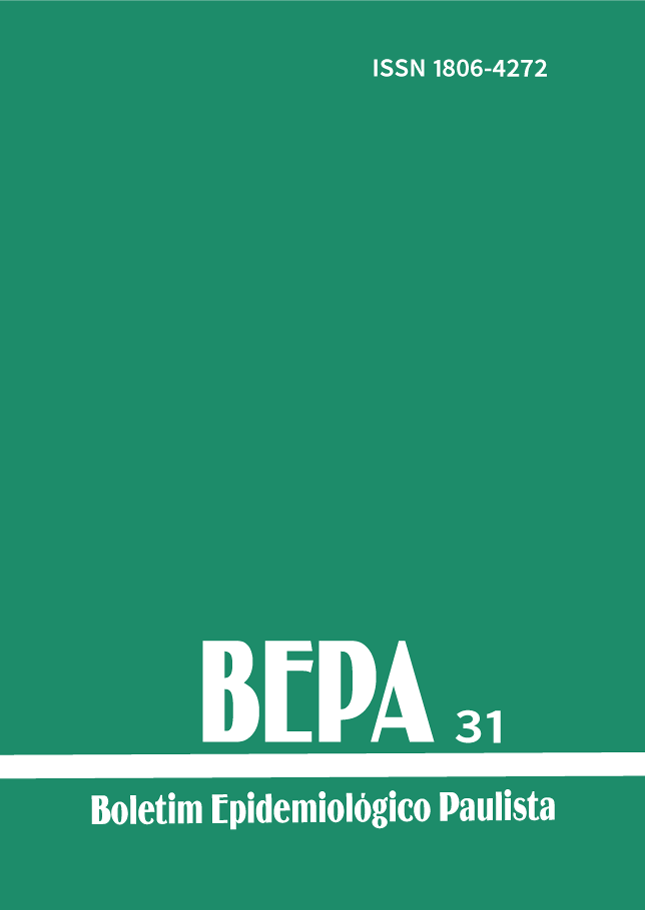Resumo
Referências
Centro de Vigilância Epidemiológica “Prof. Alexandre Vranjac” (CVE/SES-SP). Poliomielite – Informe técnico.
Fundação Nacional da Saúde (Funasa). Guia de Vigilância Epidemiológica. Quinta Edição. Brasília 2002.
World Health Organization (WHO). Polio News – Monthly Situation Reports. Disponível em: www. polioeradication.org [2006 abr].
World Health Organization (WHO). Polio News – Monthly Situation Reports. Disponível em:[2006 Jul].
World Health Organization (WHO). Global Situation. Global case count. Disponível em: www. polioeradication.org.
World Health Organization (WHO). Polio News – Issue 25 – Autumn 2005. Disponível em: www. polioeradication.org.
World Health Organization (WHO).Polio News – Issue 26 – Spring 2006. Disponível em: www. polioeradication.org.
World Health Organization (WHO). WER. Advisory committee on polio eradication – standing recommendations for responding to circulating polioviruses in polio-free areas: nº. 38, 23/09/2005: 330-331.
World Health Organization (WHO). WER. Conclusions and recommendations of the Advisory Committee on Polyomyelitis Eradication, Geneva: 11-12 October 2005; nº. 47, 25/11/2005,80:410- 416.
World Health Organization (WHO). WER. Resurgence of wild poliovirus type 1 transmission and effect of importation into polio-free countries, 2002-2005: nº. 7, 17/02/2006:63-68.
World Health Organization (WHO). WER. Progress towards interruption of wild poliovirus transmission in 2005; nº 17,2006, 165-172.
Centers for Disease Control and Prevention Centers for Disease Control and Prevention (CDC). Epidemiology and Prevention of Vaccine-Preventable Diseases. The Pink Book. 9th Edition January 2006. Poliomyelitis: 98-99.

Este trabalho está licenciado sob uma licença Creative Commons Attribution 4.0 International License.
Copyright (c) 2006 Divisão de Imunização – DI
